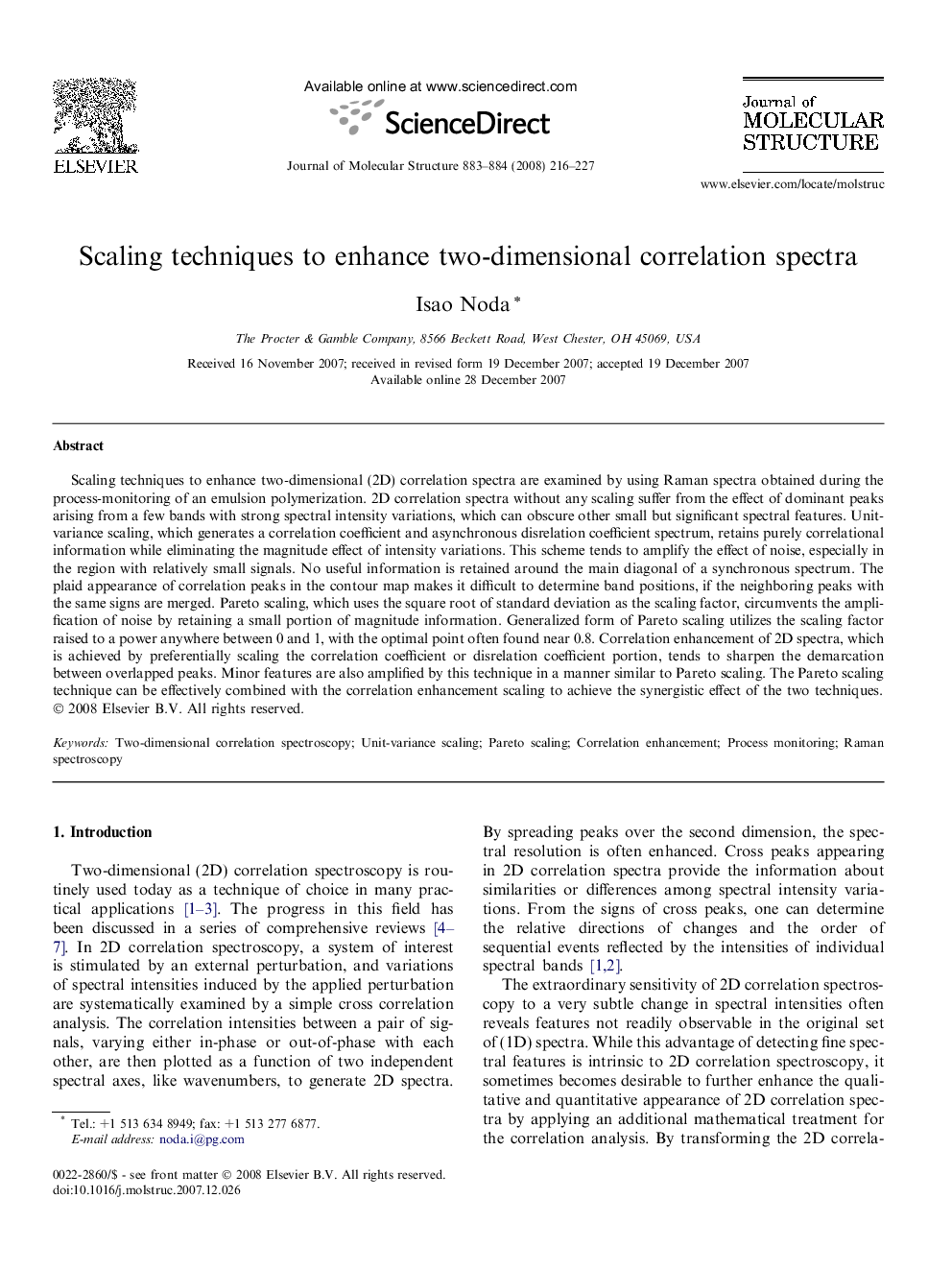| Article ID | Journal | Published Year | Pages | File Type |
|---|---|---|---|---|
| 1407329 | Journal of Molecular Structure | 2008 | 12 Pages |
Scaling techniques to enhance two-dimensional (2D) correlation spectra are examined by using Raman spectra obtained during the process-monitoring of an emulsion polymerization. 2D correlation spectra without any scaling suffer from the effect of dominant peaks arising from a few bands with strong spectral intensity variations, which can obscure other small but significant spectral features. Unit-variance scaling, which generates a correlation coefficient and asynchronous disrelation coefficient spectrum, retains purely correlational information while eliminating the magnitude effect of intensity variations. This scheme tends to amplify the effect of noise, especially in the region with relatively small signals. No useful information is retained around the main diagonal of a synchronous spectrum. The plaid appearance of correlation peaks in the contour map makes it difficult to determine band positions, if the neighboring peaks with the same signs are merged. Pareto scaling, which uses the square root of standard deviation as the scaling factor, circumvents the amplification of noise by retaining a small portion of magnitude information. Generalized form of Pareto scaling utilizes the scaling factor raised to a power anywhere between 0 and 1, with the optimal point often found near 0.8. Correlation enhancement of 2D spectra, which is achieved by preferentially scaling the correlation coefficient or disrelation coefficient portion, tends to sharpen the demarcation between overlapped peaks. Minor features are also amplified by this technique in a manner similar to Pareto scaling. The Pareto scaling technique can be effectively combined with the correlation enhancement scaling to achieve the synergistic effect of the two techniques.
